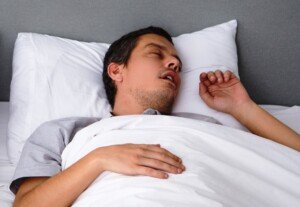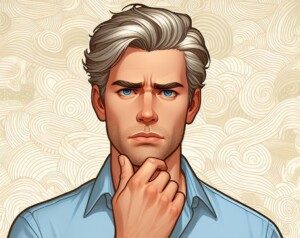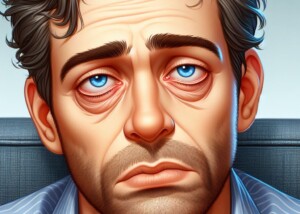Excess sitting is dangerous in so many ways, but so is untreated sleep apnea. Which is worse for the body?
Both can lead to heart disease and other ailments.
Excessive sitting, which has been defined as sitting for anywhere from four to seven or more hours a day, is a hell-raiser for your health.
Obstructive sleep apnea has gotten, as it has always gotten, very little attention in the media.
However, untreated OSA has the potential to ravage one’s health.
Sleep apnea is estimated to affect 18 to 30 million Americans (many cases will never be diagnosed), while there are no figures for how many people suffer from “the sitting disease.”
Conditions Associated with Untreated Sleep Apnea but not Excess Sitting

Freepik.com, katemangostar
• Snoring
• Repeatedly awakening overnight for no reason
• Gasping for air during sleep or being awakened by a choking sensation
• Nocturnal polyuria: Excess urine production overnight that interrupts sleep
• Pauses in breathing, sometimes up to a minute
• Morning headaches
• Excessive daytime grogginess, exhaustion or fatigue
• Difficulties with concentration
• ADHD in children (yes, kids can have sleep apnea)
• Insulin resistance
• Carbon dioxide buildup in the blood during sleep
• Blood oxygen levels during sleep dipping to as low as 60 percent (normal is at least 90)
• Heart arrhythmia (atrial fibrillation)
• Damage to the inner walls of blood vessels
• Vehicular crashes due to falling asleep at the wheel
Conditions Associated with Excessive Sitting but not Untreated Sleep Apnea

55158656@N06, CreativeCommons
• Eventual mobility problems
• Chronic pain
• Low back pain
• Spinal stenosis
• Chronic venous insufficiency
• Increased risk of getting cancer
• Raised calcium score
Conditions Associated with BOTH Untreated OSA and Sitting Too Much
• Heart failure
• Coronary artery disease
• Heart attack
• Poor cholesterol profile
• High blood pressure
• Stroke
• Diabetes (type 2)
• Deep vein thrombosis, pulmonary embolism
• Early death
• Increased risk of dying from cancer
• Increased risk of all-cause mortality
• Promotion of fat storage; difficulty losing weight
So which is worse, untreated sleep apnea or the sitting disease?
“As humans, we’re meant to be hunter-gatherers as a species, so burning off calories by moving our bodies is incredibly important to achieve homeostasis — the maintenance or balance of our internal state,” explains Daniel Rifkin, MD, a sleep medicine expert at the Sleep Medicine Centers of Western New York.
“With that said, we spend one-third of our lives sleeping, knowing restful and restorative sleep is critical to our long-term survival.
“And untreated sleep apnea is so dangerous and disruptive to so many aspects of health that we must take it seriously.
“As a sleep medicine professional with an additional degree in public health, I simply can’t choose sides.
“But if I must choose, I’d choose treating sleep apnea — because once we treat sleep apnea, sleep becomes more restorative, and daytime sleepiness diminishes.
“I always hope my patients take that newfound energy and translate it into moving their bodies during the day!”
Treatmens for Excess Sitting and Sleep Apnea
The treatment for the sitting disease can be implemented immediately (e.g., treadmill desk, standing/pacing while watching TV, pacing while on the phone).
The treatment for sleep apnea first requires a diagnosis made off a sleep study. The gold standard treatment is the CPAP machine.
 Dr. Rifkin is board certified in both neurology and sleep medicine. He also treats insomnia, RLS and narcolepsy.
Dr. Rifkin is board certified in both neurology and sleep medicine. He also treats insomnia, RLS and narcolepsy.
 Lorra Garrick is a former personal trainer certified through the American Council on Exercise. At Bally Total Fitness she trained women and men of all ages for fat loss, muscle building, fitness and improved health.
Lorra Garrick is a former personal trainer certified through the American Council on Exercise. At Bally Total Fitness she trained women and men of all ages for fat loss, muscle building, fitness and improved health.
.










































